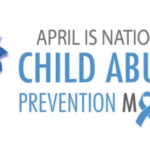The Differences between Weather Warnings and Watches
Weather is hard to predict. Meteorologists have many tools to help forecast storms and other phenomena, but it is impossible to predict the weather with 100 percent accuracy. Often, when the weather takes a turn, the National Weather Service issues notices to prepare the public. Understanding the level of threat a notice carries can help people take appropriate action and avoid serious consequences.
The NWS uses a four-tier system to alert the public to hazards.
Outlook. This is the least serious weather alert, and usually means that hazardous weather may approach in the next three to seven days. This means monitoring the situation and staying tuned for further updates.
Advisory. An advisory means weather conditions are not overly serious, but could prove inconvenient. It alerts individuals to be cautious and prudent when traveling.
Watch. A weather watch means there is an increased risk for hazardous weather, though the timing or location is uncertain. This is when it is essential to practice an evacuation or preparedness plan, and stock up on supplies.
Warning. A warning is the most serious weather notification. It warns us of an imminent or likely event that may cause a threat to property or life. Immediate action to stay safe is necessary.
These alerts are based on the severity of impending weather. The NWS may not follow the same timeline with issuing alerts, depending on how fast a weather situation develops. If a storm moves in rapidly, there may only be time for a warning. It is important to pay attention to weather notices, and be prepared when severe weather is in the forecast.












